This article needs additional citations for verification .(November 2018) |

Mary I of England has been depicted in popular culture a number of times.
This article needs additional citations for verification .(November 2018) |

Mary I of England has been depicted in popular culture a number of times.
Mary has been played on screen by:

Mary I, also known as Mary Tudor, and as "Bloody Mary" by her Protestant opponents, was Queen of England and Ireland from July 1553 and Queen of Spain and the Habsburg dominions as the wife of King Philip II from January 1556 until her death in 1558. She is best known for her vigorous attempt to reverse the English Reformation, which had begun during the reign of her father, King Henry VIII. Her attempt to restore to the Church the property confiscated in the previous two reigns was largely thwarted by Parliament, but during her five-year reign, Mary had over 280 religious dissenters burned at the stake in the Marian persecutions.

The House of Tudor was an English and Welsh dynasty that held the throne of England from 1485 to 1603. They descended from the Tudors of Penmynydd, a Welsh noble family, and Catherine of Valois. The Tudor monarchs ruled the Kingdom of England and the Lordship of Ireland for 118 years with five monarchs: Henry VII, Henry VIII, Edward VI, Mary I and Elizabeth I. The Tudors succeeded the House of Plantagenet as rulers of the Kingdom of England, and were succeeded by the Scottish House of Stuart. The first Tudor monarch, Henry VII, descended through his mother from the House of Beaufort, a legitimised branch of the English royal House of Lancaster, a cadet house of the Plantagenets. The Tudor family rose to power and started the Tudor period in the wake of the Wars of the Roses (1455–1487), which left the main House of Lancaster extinct in the male line.
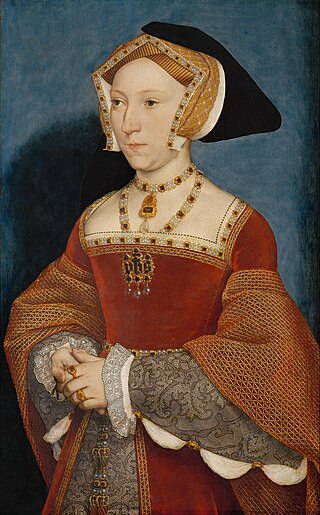
Jane Seymour was Queen of England as the third wife of King Henry VIII from their marriage on 30 May 1536 until her death the next year. She became queen following the execution of Henry's second wife, Anne Boleyn, who was accused by King Henry VIII of adultery after failing to produce the male heir he so desperately desired. Jane, however, died of postnatal complications less than two weeks after the birth of her only child, the future King Edward VI. She was the only wife of Henry to receive a queen's funeral; and he was later buried alongside her remains in St George's Chapel, Windsor Castle.

Mary Tudor was an English princess who was briefly Queen of France as the third wife of King Louis XII. Louis was more than 30 years her senior. Mary was the fifth child of Henry VII of England and Elizabeth of York, and the youngest to survive infancy.
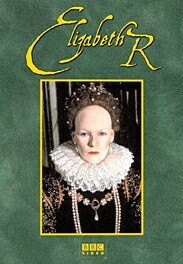
Elizabeth R is a BBC television drama serial of six 90-minute plays starring Glenda Jackson as Queen Elizabeth I of England. It was first broadcast on BBC2 from February to March 1971, through the ABC in Australia and broadcast in the United States on PBS's Masterpiece Theatre. The series has been repeated several times, most recently from 15 March 2023, by BBC Four.

Philippa Gregory is an English historical novelist who has been publishing since 1987. The best known of her works is The Other Boleyn Girl (2001), which in 2002 won the Romantic Novel of the Year Award from the Romantic Novelists' Association and has been adapted into two films.

Frances Grey, Duchess of Suffolk, was an English noblewoman. She was the second child and eldest daughter of King Henry VIII's younger sister, Princess Mary, and Charles Brandon, 1st Duke of Suffolk. She was the mother of Lady Jane Grey, de facto Queen of England and Ireland for nine days, as well as Lady Katherine Grey and Lady Mary Grey.
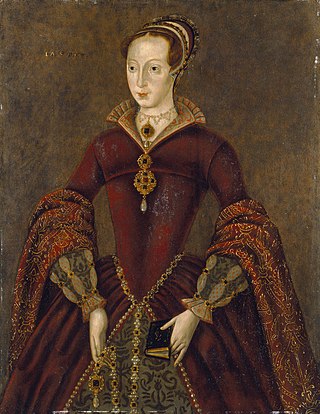
Lady Jane Grey, also known as Lady Jane Dudley after her marriage and as the "Nine Days' Queen", was an English noblewoman who claimed the throne of England and Ireland from 10 to 19 July 1553.
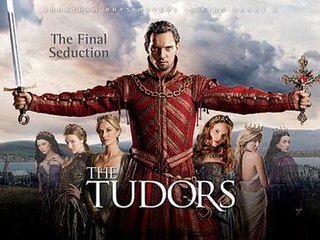
The Tudors is a historical fiction television series set primarily in 16th-century England, created and written by Michael Hirst and produced for the American premium cable television channel Showtime. The series was a collaboration among American, British, and Canadian producers, and was filmed mostly in Ireland. While named after the Tudor dynasty as a whole, it is based specifically upon the reign of King Henry VIII.

Henry VIII and His Six Wives is a 1972 British historical film adaptation, directed by Waris Hussein, of the BBC 1970 six-part miniseries The Six Wives of Henry VIII. Keith Michell, who plays Henry VIII in the TV series, also portrays the king in the film. His six wives are portrayed by different actresses, among them Frances Cuka as Catherine of Aragon, and Jane Asher as Jane Seymour. Donald Pleasence portrays Thomas Cromwell and Bernard Hepton portrays Archbishop Thomas Cranmer, a role he had also played in the miniseries and briefly in its follow-up Elizabeth R.
Young Royals is a series of novels for children by Carolyn Meyer based on the early lives of multiple royalties such as English and French royalty. Books in the series are mostly about the English Tudors, such as: Mary, Bloody Mary (1999); Beware, Princess Elizabeth (2001); Doomed Queen Anne (2002); and Patience, Princess Catherine (2004). The French books in the series are Duchessina (2007), about the life of Catherine de' Medici, and The Bad Queen: Rules and Instructions for Marie-Antoinette (2010). The most recent titles in the series are: The Wild Queen: The Days and Nights of Mary, Queen of Scots (2012); Victoria Rebels (2013), about Queen Victoria of the British Empire; and Anastasia and Her Sisters (2013), about the daughters of Tsar Nicholas of Russia, specifically Anastasia.
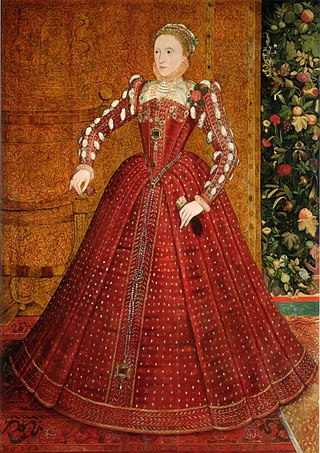
Elizabeth I of England has inspired artistic and cultural works for over four centuries. The following lists cover various media, enduring works of high art, and recent representations in popular culture, film and fiction. The entries represent portrayals that a reader has a reasonable chance of encountering rather than a complete catalogue.

Henry VIII and his reign have frequently been depicted in art, film, literature, music, opera, plays, and television.

Lady Jane Grey, 16th-century claimant to the English throne, has left an abiding impression in English literature and romance. The limited amount of material from which to construct a source-based biography of her has not stopped authors of all ages filling the gaps with the fruits of their imagination.
Edward VI of England has been depicted in popular culture a number of times.
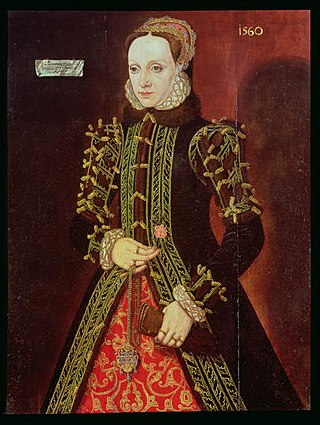
Elizabeth FitzGerald, Countess of Lincoln, also known as "The Fair Geraldine", was an Irish noblewoman and a member of the celebrated FitzGerald dynasty. She became the second wife of Sir Anthony Browne and later the third wife of English admiral Edward Clinton, 1st Earl of Lincoln. She was the inspiration for The Geraldine, a sonnet written by Henry Howard, Earl of Surrey.
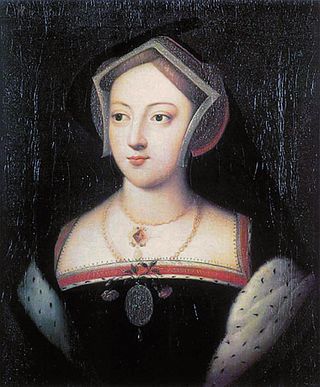
The mistresses of Henry VIII included many notable women between 1509 and 1536. They have been the subject of biographies, novels and films.
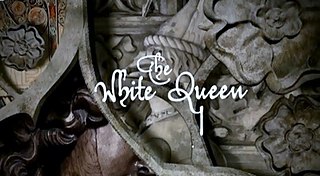
The White Queen is a British historical drama television drama serial based on Philippa Gregory's historical novel series The Cousins' War. The first episode premiered on BBC One on 16 June 2013 in the UK.
Maureen Peters was a historical novelist, under her own name and pseudonyms such as Veronica Black, Catherine Darby, Belinda Gray, Levanah Lloyd, Judith Rothman, Elizabeth Law and Sharon Whitby.

Catherine of Aragon was Queen of England from June 1509 until May 1533 as the first wife of King Henry VIII. She has been portrayed in film, television, plays, novels, songs, poems, and other creative forms many times, and as a result, she has stayed very much in popular memory.